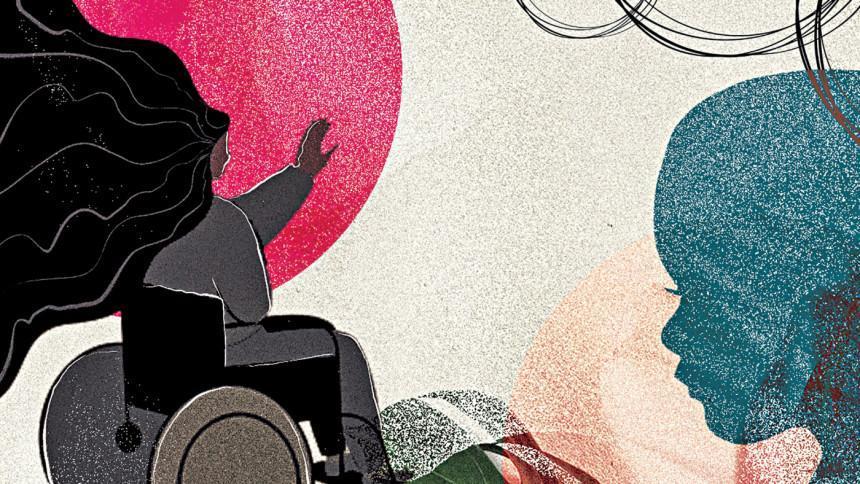Violence against young women and girls with disabilities: An everyday affair
Worldwide, young women and girls with disabilities face up to 10 times more violence than women and girls without disabilities, and Bangladesh is no exception.
In Bangladesh, young women with disabilities are at a high risk of experiencing gender-based and other forms of violence due to social exclusion, limited mobility, lack of support structures, communication barriers, negative social perceptions, and overall culture of impunity.
According to data from the Women with Disabilities and Development Foundation, an organisation providing non-legal support to women with disabilities, 96 percent of women and girls with disabilities face physical, psychological, sexual and emotional violence.
Another 2020 study conducted by BRAC James P Grant School of Public Health, in association with the Netherlands Embassy that interviewed 5,000 people with disabilities, revealed that one fourth (74 percent) of the women and girls with disabilities faced psychological violence, while more than 33.2 percent of them faced physical violence and 10 percent faced sexual violence.
In most cases, the caregivers, either at home or in institutional settings, and violent partners, are found to be the perpetrators, as they are socially dependent on them for survival.
On the other hand, research and real-life experience show that once young women and girls with disabilities are victims of violence, they are more likely to be victims of violence for the second or third time, as the perpetrators take advantage of their vulnerability and helplessness.
Bangladesh Legal Aid and Services Trust (BLAST) data also revealed a similar picture of the magnitude of repeated violence against them–about 78 percent of young women and girls with disabilities become victims of various forms of sexual and physical abuse due to their limited ability to protest and 18 percent of them are victims of repeated abuse.
However, media monitoring reports also show that incidents of violence against this vulnerable group mostly go unreported.
The process for reporting violence is often inaccessible because of family, administrative and social barriers, as almost 99 percent of women with disabilities live below the poverty line, while only 1 percent of girls with disabilities have access to education and an overwhelming majority of them do not know sign language.
Besides, the inequalities in access to justice, including the inaccessible court buildings, lack of interpreters for young women and girls with intellectual, speech, hearing and psycho-social disabilities, inadequate policies and standards, information unavailability about services and funding make them even more vulnerable to experience multiple forms of violence.
According to experts, we need to look for reasons why young women and girls with disabilities are being excluded from getting justice, and take necessary steps to remove these obstacles.
Arranging compensation for the victims of disabilities and giving exemplary punishment to the perpetrators is crucial, they noted. Meanwhile, laws related to disability rights must be disseminated to the victims in accessible formats (through braille, sign language), so that they can be aware of the crimes and their rights.
Ashrafun Nahar Misti, Executive Director, WDDF, also highlighted that the Persons with Disabilities Rights and Protection Act 2013 does not specify how a girl child or young woman will get remedies if they are raped.
“It would have been better if there was a separate chapter on how these particular cases could be tried and remedies were provided,” she said.
Author: Nilima Jahan, Staff Reporter, Daily Star. Email: nilimatds@gmail.com.
Illustration: Salman Sakib Shahryar
Source: The Daily Star

